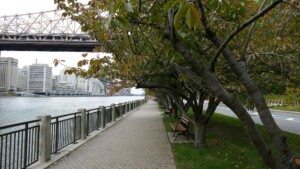The artificial production of snow, like that of any other material once found in abundance, can be a riveting thing to witness for the very same reason it can cause alarm: it demonstrates both the mastery of our surroundings as well and our anxious desire to manufacture them in the face of escalating material scarcity. All around the world, ski resorts and other snow-based trades are reporting that they can no longer rely on the natural cycles of the global climate to produce the snow they need to keep their businesses afloat and must consider alternative means. “If [they] relied only on natural snow,” explained meteorologist Joel Gratz, “some resorts wouldn’t be able to open at all, and others wouldn’t be able to run their base areas.”
The tools for snowmaking, as it is known today, were first developed in 1950 and patented in 1952 by engineers Art Hunt, Dave Richey, and Wayne Pierce by attaching a garden hose to a 10-horsepower compressor and spray-gun nozzle. From modest beginnings came sophisticated, large-scale instruments that have been helping related businesses to maintain operations more days per year, since the 1970s. The components sited on the edges of ski paths are known as snow guns, which shoot tiny water droplets into the air that freeze before they hit the ground. One version of the snow gun internally combines water and compressed air to split the water into droplets atop a slender tower and propels them far and wide, while the more expensive version, known as an airless snow gun, propels water using only a powerful internal fan within a cannon-like form.
As simple as snow guns may sound, the hidden infrastructure and software required to sustain them are modern marvels of engineering. Resorts work year-round to service and stock the water reserves embedded within the slopes, and some are able to transport as much as 12,000 gallons of water a minute uphill. And because employees of a resort cannot reasonably inspect the varying weather conditions of their sites on foot, snowmaking systems are often equipped with computerized sensors that collect hyper-localized weather data to determine the most optimal times for activating the snow guns. These sensors can not only reduce the labor costs of up to 30 percent but can also significantly lessen the amount of water expelled over the course of the winter season. Given that some of the largest North American resorts can spend as much as $2 million annually on snowmaking alone, the sensors provide a much-needed strategy for improving cost and material efficiency.
Snowmaking techniques have evolved so dramatically in the last forty years, in fact, that some resorts have opened up in warmer parts of the world by relying entirely on the technology. There are now indoor ski resorts in Saudi Arabia, Indonesia, Australia, and other climates whose populations have rarely experienced snow first-hand. One of the first modern examples is Dubai’s Emirates Indoor Ski Resort, completed in 2005 by local company Majid Al Futtaim. The 240,000-square-foot building is raised just above the scorching desert ground, and its interior is snow-kissed every day of the year under a low-slung painting of a foggy blue sky. Even when temperatures outside exceed 106 degrees Fahrenheit, the interior of Ski Dubai remains within an optimal wet-bulb temperature range thanks to a series of overhead air conditioners that allow the snow guns attached to the perimeter to do their magic whenever a bald patch emerges on the slopes. Majid Al Futtaim is currently developing Wintastar Shanghai, which will become the world’s largest indoor ski resort at nearly one million square feet when complete, while the first indoor ski resort in North America is set to open in East Rutherford, New Jersey, on December 5 with 5,500 tons of snow on its slopes.
The global water supply required for snowmaking, however, cannot easily keep pace with the development of ski resorts around the world. While the climates that have naturally supported skiing conditions, such as the Swiss Alps and parts of the American Northeast, are typically adjacent to copious water reserves that support snowmaking when necessary, the more recently developed ski resorts often go to much further lengths to keep their businesses afloat. And, given that it can take up to 14 kWh of energy (about the same as washing seven loads of dishes) to produce a single cubic meter of snow, the process of snowmaking for even a modestly-sized resort is far from energy-efficient.
As naturally occurring snow becomes an even rarer commodity in the near future, the global competition among resorts for optimal skiing conditions by artificial means will no doubt continue unabated. With time, however, more sustainable methods of snowmaking may come to light—the only other alternative is conservation.











